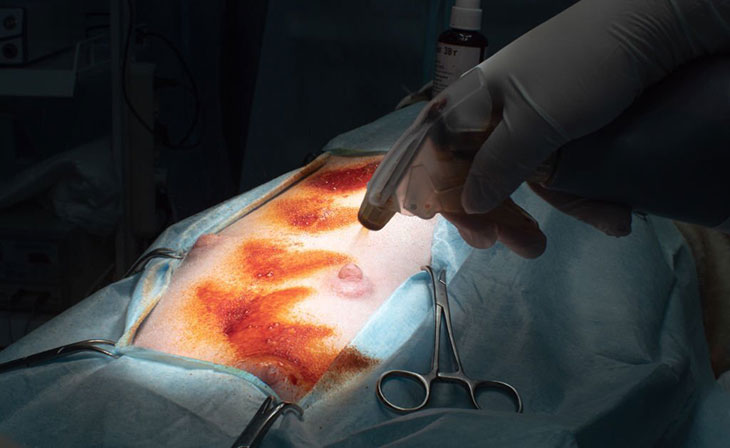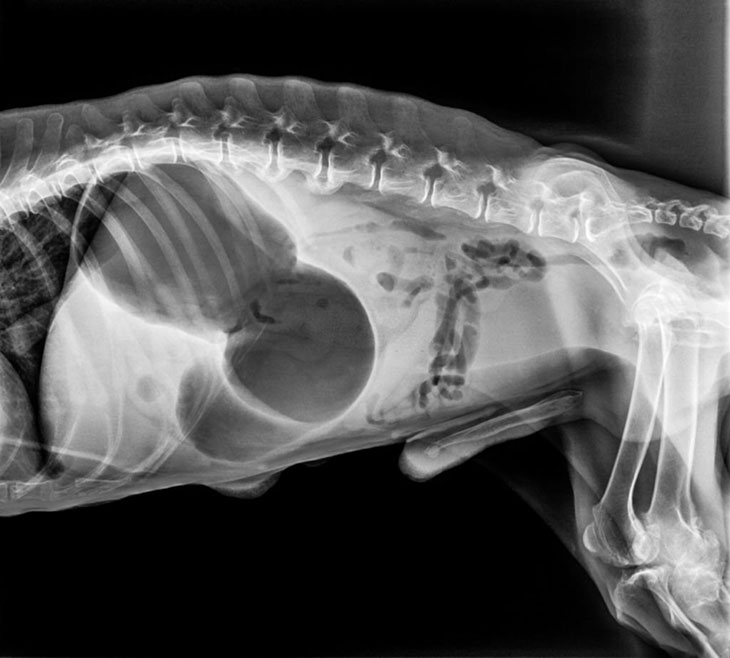When dogs develop excessive fluid buildup in their abdomen, it can be a concerning and uncomfortable condition.
Draining the fluid can provide relief and improve their overall well-being, whether due to an underlying health issue or trauma.
How to drain fluid from dog abdomen safely and effectively? Keep scrolling for more details.
What Is The Fluid In Dog’s Abdomen (Ascites In Dogs)?

Fluid in the dog’s abdomen, also known as ascites in dogs, refers to the abnormal accumulation of fluid within the abdominal cavity.
The excess fluid can pressure the surrounding organs. It may lead to discomfort, difficulty breathing, and a visibly distended belly.
What Are The Causes Of Fluid In Dog Abdomen?
This condition can be caused by various underlying health issues, such as:
- Liver disease: These diseases refer to cirrhosis, hepatitis, or liver failure. They can disrupt normal liver function and promote fluid retention in the abdomen.
- Congestive heart failure & Heartworm disease: When the heart cannot pump blood effectively, or the dog has heartworm disease, it can result in fluid backup in the abdomen.
- Kidney disease: Fluid can accumulate throughout the body due to impaired kidney function.
- Low protein levels: Malnutrition or protein-losing enteropathy can contribute to fluid buildup.
How To Drain Fluid From Dog Abdomen?
Abdominocentesis is the most common way to drain fluid from a dog’s abdomen. If your dog has a serious condition, it may need surgery.
Medication and a proper diet will help your dog recover faster.
Use Abdominocentesis
Draining fluid from a dog’s abdomen can be done through a common method called abdominocentesis. It’s best to let a veterinarian do it. Below is the procedure:
- Preparation: A veterinarian will put the dog on a padded surface that is cleaned and disinfected to minimize the risk of infection.
- Needle insertion: A sterile needle attached to a syringe is carefully inserted through the abdominal wall into the fluid-filled space.
The exact spot for insertion may vary depending on the veterinarian’s preference and the dog’s condition.
- Fluid withdrawal: Using gentle suction, the veterinarian will slowly withdraw the fluid in abdomen dog to the syringe.
Note:
- In most cases, abdominocentesis doesn’t require sedation or anesthesia, as it is a relatively quick procedure.
- Abdominocentesis is a temporary solution. It provides immediate relief by reducing abdominal distension and discomfort.
However, the underlying cause of the fluid accumulation must be solved. It will support long-term management and prevent further fluid buildup.
- If the dog is experiencing breathing difficulty, abdominocentesis may not be safe.
Have Surgery
Draining fluid in dog’s abdomen can be done using a hypodermic needle and local anesthesia for less serious cases.
General anesthesia is applied before surgery in more severe situations where a drain needs to be installed.
The surgeon will make a small incision, insert a tube or catheter into the affected area, and secure it.
The other end of the drain is connected to either a flask for passive drainage or a pump for active removal of excess fluid.
Depending on the severity of the condition, the drain may be removed after surgery or left in place for ongoing fluid management.
Use Proper Medication And Diet
Medication:
- Antibiotics to prevent or treat infection
- Diuretics to reduce fluid retention
- Medications to manage any related conditions (liver or heart disease).
Diet:
- You’ll need a low-sodium diet depending on the underlying cause and the dog’s specific condition. Follow your veterinarian’s advice on feeding guidelines and recommended brands.
- In some cases, additional nutritional supplements will be included. They will support liver or kidney function or boost immune system health.
- Adequate hydration is also important for the dog’s overall health and recovery. Ensure fresh, clean water is always available to encourage the dog to urinate after surgery.
How To Prevent Fluid In Dog Abdomen?

Regular veterinary examinations
Bringing your dog for routine veterinary check-ups is essential. Regular examinations allow you to monitor your dog’s overall health.
Besides, you can detect any early signs of potential problems that could lead to fluid accumulation.
Comprehensive blood tests
Regular blood work can help identify abnormalities or underlying conditions contributing to fluid retention.
Proper diet and nutrition
Following your veterinarian’s guidance, provide a balanced and appropriate diet for your dog.
What Are The Symptoms Of Fluid In Dog Abdomen?
- Abdominal swelling: The abdomen may appear enlarged or rounded, and the dog’s belly may feel tense or firm to the touch.
- Lethargy and weakness: Dogs with fluid in their abdomen may exhibit decreased energy levels and appear tired. They will show signs of general weakness or reluctance to engage in physical activities.
- Difficulty breathing: The fluid in the abdomen can exert pressure on the diaphragm and lungs. It will trigger difficulty breathing, panting, or coughing.
- Weight gain: The amount of dog fluid in abdomen can cause unexplained weight gain, even if the dog’s appetite and food intake remain unchanged.
- Decreased appetite: Dogs may show disinterest in food, such as not wanting to eat meat, or have a reduced desire to eat.
- Vomiting: In some cases, dogs with ascites may experience vomiting. It can result from the pressure on the gastrointestinal system caused by the fluid buildup.
FAQs

What Is The Cost To Drain Fluid From Dogs Abdomen?
- Abdominocentesis: The cost of abdominocentesis can range from approximately $420 to $720.
- Diuretics: Diuretics are medications used to reduce dog abdominal fluid retention in the body. On average, diuretics cost from $13 to $18 per 100-count supply.
- Diet: Proper dietary modifications can manage underlying conditions contributing to fluid accumulation. The cost of specialized diets can be $55 to $78.
How To Diagnose Ascites In Dogs?
Physical examination: The veterinarian will examine the dog, paying close attention to the abdomen.
They will assess the size, shape, and feel of the abdomen to determine if there is any abnormal fluid accumulation.
X-rays (radiographs): X-rays can detect fluid in the abdominal cavity.
It also helps identify potential underlying causes such as organ enlargement, masses, or heart or liver disease signs.
Is Ascites A Serious Problem?
Yes, ascites can be a serious problem for dogs if left untreated. It is typically a symptom of an underlying condition that needs to be addressed.
If ascites is not properly managed and the underlying cause is not treated, it can lead to various complications such as:
- Respiratory distress
- Infection
- Nutritional imbalances
- Pain
Conclusion
Knowing how to drain fluid from dog abdomen is an important skill that can potentially save a dog’s life.
Using abdominocentesis or surgery methods can effectively drain the fluid in the abdomen.
Proper diagnosis and treatment by a veterinarian are crucial to ensure the health and well-being of your furry companion.
